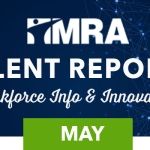Is your organization prepared for the challenges associated with a disruption to your business? What would happen if key leaders or employees abruptly left the company? Do you have successors identified? Are they ready to step into new, often more challenging roles?
A review of Starbucks’ leadership since the 2000s provides a lesson in the importance of having plans in place. By all appearances, Starbucks' leadership and Board of Directors did not adequately plan for leadership changes. Howard Schultz served as the company’s chairperson and CEO beginning in 1986. He is considered responsible for their rapid growth. However, the company struggled under new leadership after his departure in 2000, and he assumed the role again from 2008 to 2017. After the departure of his successor, Kevin Johnson, he again provided leadership on an interim basis from 2022 to 2023. It seems that Howard Schwartz is Starbucks’ contingency plan, and the company could benefit from some robust Business Continuity Management (BCM).
Strong organizations, large and small, recognize the value of BCM, a framework that allows employers to focus on key elements that may disrupt operations and can result in significant negative impact(s) on the organization. Often, a process that uses four key elements is used in the BCM framework: people, processes, premises, and providers. When viewed through this lens, HR’s role is primarily focused on people.
Two primary activities associated with providing support through the people aspect of BCM include replacement planning and succession planning. These two activities may seem the same. However, there are distinct differences. Replacement planning has a short-term focus on identifying potential backups for critical positions should an organization unexpectedly lose a leader or a key employee in one or more of these positions. It is a tactical activity, determining replacements from existing employees who are qualified and have the experience necessary to step into a role for a brief period. Succession planning is a longer-term strategy focused on identifying employees who, with development, may step into leadership and critical roles in the future.
A high-level overview of the process includes ensuring that all parties responsible for the process have a consistent, clear understanding of the desired future state of the organization. This is followed by understanding and mapping the specific skills, competencies, and experience necessary to achieve that state. Next, employers will need to assess if they have key employees or leaders who have indicated an intention to step down or retire, and if so, when that may happen. Any critical employees who may be a flight risk are also identified.
Using a variety of tools, such as reviews, assessments, rankings based on key factors, and recommendations, employees are identified who, with development, can step into those roles at a future date. They are often referred to as “high-potential” employees. This process also includes identifying gaps in their education or experience to ensure development opportunities are identified and assigned. Including data from any career pathing processes will also help employers understand employees’ goals and aspirations. Upon the completion of these processes, it is time to meet with those employees identified as high-potentials, advise them of the company’s plans to support their development, obtain their feedback, identify training opportunities, and create a development plan and timeline.
Both replacement and succession planning require the buy-in of senior leadership and a commitment to provide the resources, time, and continuing support of these efforts to benefit the future state of the company. Not all positions in the organization will need to be included in either process. Consider ranking them based on impact on the organization to initially determine what roles should be addressed first. These plans should be revisited at least annually, but always when you experience turnover in one of the key positions. Doing so will ensure that your plans will be a living artifact that reflects the current and future needs of the company. Engaging in these processes will ensure your company has the talent to fill emergency needs and see you into the future, even if you have a Howard Schultz!
If you need assistance, MRA professionals are here to help. Whether your needs are strategic, such as determining an optimal organizational structure, or tactical activities such as identifying tools to assist in replacement and succession planning, our professionals can provide the assistance you need. We also can support your learning and development initiatives through our wide range of trainings, seminars, and events.
Contact us for more information!







